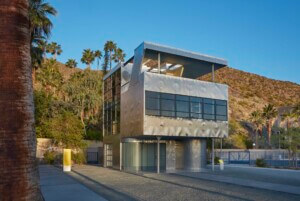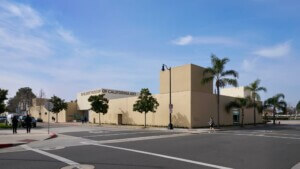Despite everything else going on in the world, this week is shaping up to be a good one for Elon Musk; SpaceX became the first private company to successfully send humans into space on Saturday, and yesterday it was announced that the Boring Company had been selected to build a high-speed underground airport transit system in San Bernardino County, California.
On June 3, the San Bernardino County Transportation Authority’s Board of Directors unanimously voted to suspend a $3 million study of connectors from Rancho Cucamonga to Ontario International Airport in downtown Ontario, California. Instead, the board will pursue the Boring Company’s (unsolicited) proposal to build the 2.8-mile-long underground Ontario Airport Loop.
The Boring Company’s Loop, which, at 14-feet-wide and buried 35 feet underground, is supposed to transport passengers in either direction at speeds of up to 127 miles per hour in electrical busses that could seat up to 12 passengers and their luggage. It should be noted that these wouldn’t be self-driving vehicles, and operators would still need to be hired and paid. Still, the proposal was chosen because the Boring Company touted that it would only cost an estimated $45-to-60 million to build their system, compared to the $1-to-1.5 billion it would cost to extend the Pomona light rail system. It’s also expected that the underground route would only take three-to-four years to build, compared to the decade it would take for comparable light rail development. Such a massive reduction in cost would greatly reduce the county’s need to ask for outside funding help, especially at a time when the federal government is less than inclined to hand out money for public transportation projects.
The board is still debating the exact locations for each Loop station, and will still need to research what measures will need to be taken to make the tunnel seismically secure; southern California is obviously susceptible, and San Bernardino County experienced a 5.5-magnitude earthquake just last night. A more thorough report outlining potential routes, stations, and the environmental impact will be sent to the board’s Transit Committee in August or September.
This victory for the Boring Company comes one year after similar plans for an airport loop in Chicago were quashed by the then-newly-elected Mayor Lori Lightfoot.











